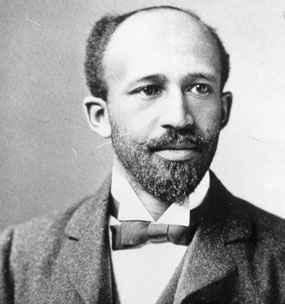Countee Cullen was actually
born as Countee LeRoy Porter in March 30, 1903. Although there is little to no
information about his childhood, it is believed he went to live with his
grandmother in Harlem at the age of nine. Unfortunately, Countee’s grandmother
died in the year 1918, and he had just turned 15. Countee was then adopted by a
minister of the Salem Methodist Episcopal Church named Reverend Frederick
Cullen, thus Countee adopted his widely known last name - Cullen.
Countee Cullen had an
incredibly successful academic career during his lifetime. Cullen attended
DeWitt High School where he graduated as an honor student in 1922 with special
distinction in the subjects of math, Latin, French, and Greek. It was also then
that Cullen’s teachers noticed his gift for poetry and outstanding speaking
skills. Cullen then attended New York University where he won second place in
both 1923 and 1924, and then first place in the year 1925 for the Wittier
Bynner Poetry Contest. Cullen furthered his education by earning his Master’s
Degree in English at Harvard University. While at Harvard, Cullen published
some of his most famous poems such as: “Color”, “Heritage”, “Incident”, and
“Yet do I Marvel”.
Cullen’s poem, “Incident”,
contains all the elements that are characteristic of Harlem Renaissance poetry.
In this poem, the narrator reflects on his trip to Baltimore as child. Maryland was a slave state during the Civil War. Baltimore had a primarily white population, then in 1968 - Martin Luther King's assassination -there was a riot which then lead to the town being primarily populated by African-American's (Bettye). Cullen's poem was written during a time when slavery was over, however there was still a lot of tension between the black and white peoples of Baltimore (Bettye).
“Cullen was young, Black,
handsome and brilliant. He was one of Harlem's brightest stars. He moved easily
between Black and white cultures and believed that art was bigger than race and
could, in fact, be used to bring the races closer together” (Williams). Countee
Cullen had everything in his advantage because he was extremely intelligent and
possessed the Black experience of life.
Cullen went on to write for an
African American journal where his column the “Dark Tower” became popular.
“Dark Tower” is significant because it is the name of the home belonging to
A’lelia Walker, who would invite the “crème de la crop” of the Harlem
Renaissance to her home as sort of a nightclub. This is home was torn down in
1941, but is now a library named after Countee Cullen.
In 1928 Countee Cullen married
W.E.B Du Bois’s daughter, Nina Yolanda Du Bois; they divorced two years later.
Throughout the rest of his
life, Cullen published a wide range of writings, from children’s books to a
musical, but he spent most of his time as a French teacher at Frederick
Douglass Junior High.
“Cullen wanted to be known as
a poet, not defined by race, despite race being a recurring theme in his work.
He clarified his point in the Brooklyn Eagle, Feb. 10, 1924: ‘If I am going to
be a poet at all, I am going to be POET and not NEGRO POET. This is what has
hindered the development of artists among us. Their one note has been the
concern with their race’” (Williams).
Countee Cullen died January 9, 1946 from high blood
pressure problems.



